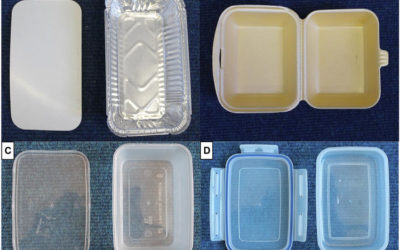Whether you run a bar, café, restaurant or some other type of eatery, you’ll likely be familiar with the debates around plastic straws. Some high-profile documentaries have led to plastic straws moving to the forefront of the fight against plastic waste. Yet many customers don’t want straws to disappear entirely from their drinking experience. Instead, they’d prefer them to be made from more sustainable materials. Here are our top 5 options: 1. Paper Paper was the material of choice for straws before plastic took hold, but plastic became cheaper and easier for manufacturers to produce and customers to use, so it faded into the background. Now paper straws are back with a vengeance as improved production techniques have increased the strength and durability of paper straws. Best of all, they’re a compostable and biodegradable option. 2. PLA PLA stands for polylactic acid, and it’s become popular in recent years as an alternative material for straws thanks to its natural properties. Generally made from materials derived from plants, these straws will biodegrade naturally and efficiently when sent to a composting facility. If you use a lot of straws in house rather than passing them to customers for takeaway use, PLA could be an excellent option and will boost your environmental credentials amongst customers. 3. Bamboo Bamboo straws are popular not only because they’re biodegradable but also because they’re reusable. That makes them a great alternative for in-house use if there are procedures in place to properly clean straws after use. Bamboo is another natural plant material that will naturally biodegrade under the right circumstances, meaning that you’re putting the straw back into the earth rather than taking materials and creating waste. 4. Rice As the name suggests, rice straws are made primarily from rice, although they’re often mixed with another – equally natural – product to make a sturdy straw. Rice straws are another biodegradable straw option and they usually decompose within 90 days. Some people even eat them once they’re finished drinking with them, though this is a matter of personal taste! 5. Stainless Steel While it’s not the cheapest option on the list, stainless steel straws are a credible option if your company has the capacity to reuse straws. For example, if you serve milkshakes to drink inside your establishment, you may be able to use stainless steel straws and wash them as part of your standard cleaning routine. Like bamboo, stainless steel straws are a great idea as long as you make time to clean them properly. Finally, remember that you need to be careful whenever you switch to a new straw material. Some customers are intolerant to some materials such as rice while others physically won’t be able to manage with, for example, a paper straw that dissolves before they finish their drink. Be consumer aware and treat straws just like any other element of your business – something that will work for some people but might not work for everybody. Every customer counts, and you shouldn’t sacrifice your business reputation in the name of trying to save the planet.



